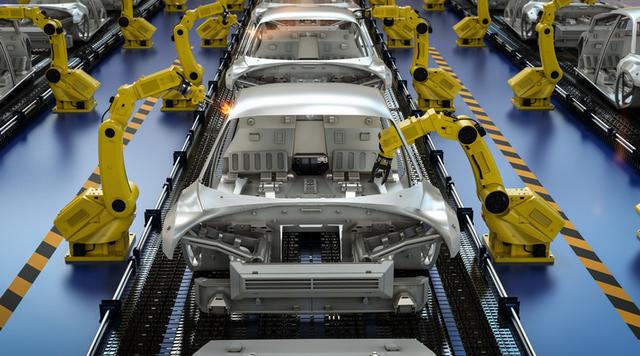Insights With Topics: STAR BOARD
Bedrock economyChina New EconomyA-sharesFactor InvestingMulti-factorSTAR BOARDValueSizeQualityGrowth
Going into a July meeting of top party officials at China’s Third Plenum, held once every five years, first-quarter hopes of a 2024 recovery in China’s economy had given way to macro uncertainty, as strength in manufacturing and exports served for many to highlight just how weak domestic sentiment and consumption remain. In this article, Dr. Phillip Wool, Global Head of Research of Rayliant Global Advisors, digs into such challenges and potential paths forward for Beijing, including our thoughts on a Third Plenum meeting that didn’t yield any policy bombshells, but still offers clues as to where investors might focus as we enter the second half ready for bargain hunting.
Jul 30, 2024
Bedrock economyChina New EconomyA-sharesFactor InvestingMulti-factorSTAR BOARDValueSizeQualityGrowth
Going into a July meeting of top party officials at China’s Third Plenum, held once every five years, first-quarter hopes of a 2024 recovery in China’s economy had given way to macro uncertainty, as strength in manufacturing and exports served for many to highlight just how weak domestic sentiment and consumption remain. In this article, Dr. Phillip Wool, Global Head of Research of Rayliant Global Advisors, digs into such challenges and potential paths forward for Beijing, including our thoughts on a Third Plenum meeting that didn’t yield any policy bombshells, but still offers clues as to where investors might focus as we enter the second half ready for bargain hunting.
Jul 30, 2024
While Artificial Intelligence Generated Content (AIGC) has been dominating media and market attention, the “next big thing” has been developing rapidly in the background in China, in the form of super-scale AI infrastructure. It involves, among other things, a national computing power network; data centre clusters from Guangdong to Inner Mongolia and from Gansu in the West to Anhui in the East; centres for the development/training of large language models; and abundant green energy integrated with massive energy storage facilities. What is rapidly emerging is a gigantic national network connecting smart grids, intelligent network routing and energy storage – one that has no parallel anywhere else in the world. The pay off will be lower cost execution of computing processes and high-end manufacturing/AI-based industrial automation. The current media focus has been on the speed of the microchip as the key factor in the AI race. The following insight details the elements of the AI-infrastructure that are likely to prove critical in the next phase of AI development.
Jun 19, 2024
While Artificial Intelligence Generated Content (AIGC) has been dominating media and market attention, the “next big thing” has been developing rapidly in the background in China, in the form of super-scale AI infrastructure. It involves, among other things, a national computing power network; data centre clusters from Guangdong to Inner Mongolia and from Gansu in the West to Anhui in the East; centres for the development/training of large language models; and abundant green energy integrated with massive energy storage facilities. What is rapidly emerging is a gigantic national network connecting smart grids, intelligent network routing and energy storage – one that has no parallel anywhere else in the world. The pay off will be lower cost execution of computing processes and high-end manufacturing/AI-based industrial automation. The current media focus has been on the speed of the microchip as the key factor in the AI race. The following insight details the elements of the AI-infrastructure that are likely to prove critical in the next phase of AI development.
Jun 19, 2024
China’s household consumption appears to have been massively underestimated in international comparisons, because of differences in data definitions and valuation methodologies. The two big areas of differences in international comparisons are: 1) Social transfers in kind, which could be worth some 6% of GDP; and 2) The value of housing services provided by owner-occupied homes, which could be worth another 5% of GDP. In this article, our Senior Advisor Say Boon Lim discusses why the criticisms of China’s growth model and "underconsumption" look flawed.
May 9, 2024
China’s household consumption appears to have been massively underestimated in international comparisons, because of differences in data definitions and valuation methodologies. The two big areas of differences in international comparisons are: 1) Social transfers in kind, which could be worth some 6% of GDP; and 2) The value of housing services provided by owner-occupied homes, which could be worth another 5% of GDP. In this article, our Senior Advisor Say Boon Lim discusses why the criticisms of China’s growth model and "underconsumption" look flawed.
May 9, 2024
Bedrock economyChina New EconomyA-sharesFactor InvestingMulti-factorSTAR BOARDValueSizeQualityGrowth
Despite mainland stocks putting up a solid Q1—the CSI 300 Index gained 3.1% for the quarter—and although macro fundamentals appeared as if they might be turning a corner at the start of 2024, bullish sentiment toward China equities had yet to materialize, with many questioning whether a first-quarter rebound would sustain. In the commentary below, Dr. Phillip Wool, Global Head of Research of Rayliant Global Advisors, delves into the details of China’s economy and market action during Q1, discussing how Beijing’s plan to nurture high-quality growth might translate to macro conditions and investors’ portfolios.
May 9, 2024
Bedrock economyChina New EconomyA-sharesFactor InvestingMulti-factorSTAR BOARDValueSizeQualityGrowth
Despite mainland stocks putting up a solid Q1—the CSI 300 Index gained 3.1% for the quarter—and although macro fundamentals appeared as if they might be turning a corner at the start of 2024, bullish sentiment toward China equities had yet to materialize, with many questioning whether a first-quarter rebound would sustain. In the commentary below, Dr. Phillip Wool, Global Head of Research of Rayliant Global Advisors, delves into the details of China’s economy and market action during Q1, discussing how Beijing’s plan to nurture high-quality growth might translate to macro conditions and investors’ portfolios.
May 9, 2024
While investors would look at it as a period of crackdown on for profit tutoring businesses, since the “Double Reduction” policy (to reduce the pressures of homework and after-school tutoring) in 2021, young students indeed are able to spend more time on extracurricular activities that they enjoy. Given the size of addressable market, there has been a proliferation of various STEM (Science, Technology, Engineering, and Mathematics) learning, traditional culture and art-jamming activities in China, including many well-equipped new establishments fitted out with the latest digital technologies such as AI, 3D exhibitions and robotic guides, catering to various developmental needs and interests of children who now have more free time at hand they can deploy for more fun activities. Take the Guangdong province for example, there are 150 public libraries, 144 cultural centers, 352 museums, and 141 art museums built as of 2023 – and many of these are free of charge or charge very affordable fees available for both locals and visitors. In this article we share some of the popular ones that you may find of interest for your next trip to the region.
Mar 26, 2024
While investors would look at it as a period of crackdown on for profit tutoring businesses, since the “Double Reduction” policy (to reduce the pressures of homework and after-school tutoring) in 2021, young students indeed are able to spend more time on extracurricular activities that they enjoy. Given the size of addressable market, there has been a proliferation of various STEM (Science, Technology, Engineering, and Mathematics) learning, traditional culture and art-jamming activities in China, including many well-equipped new establishments fitted out with the latest digital technologies such as AI, 3D exhibitions and robotic guides, catering to various developmental needs and interests of children who now have more free time at hand they can deploy for more fun activities. Take the Guangdong province for example, there are 150 public libraries, 144 cultural centers, 352 museums, and 141 art museums built as of 2023 – and many of these are free of charge or charge very affordable fees available for both locals and visitors. In this article we share some of the popular ones that you may find of interest for your next trip to the region.
Mar 26, 2024
Consumer spending in China continues to grow strongly by international standards, even as the pattern of that spending evolves. The image of weak consumerism in China – as portrayed by the media – is misleading in two ways. For starters, the growth in retail sales in China is only “low” relative to the very high (mostly double digit) rates recorded in the 2010s. However, at 7.2% y/y growth in the full year 2023, China’s retail sales growth compares very well internationally. Beyond that, there are also changing social trends which are driving different forms of consumption in China, which then support investments that are more reflective of the transformation in China. In this article, we discuss more about how young Chinese are the main driving force in China’s consumer market and identify the winners of this quiet but significant sea change in consumer behaviour.
Mar 1, 2024
Consumer spending in China continues to grow strongly by international standards, even as the pattern of that spending evolves. The image of weak consumerism in China – as portrayed by the media – is misleading in two ways. For starters, the growth in retail sales in China is only “low” relative to the very high (mostly double digit) rates recorded in the 2010s. However, at 7.2% y/y growth in the full year 2023, China’s retail sales growth compares very well internationally. Beyond that, there are also changing social trends which are driving different forms of consumption in China, which then support investments that are more reflective of the transformation in China. In this article, we discuss more about how young Chinese are the main driving force in China’s consumer market and identify the winners of this quiet but significant sea change in consumer behaviour.
Mar 1, 2024
There is a big disconnect between the image of the Chinese economy portrayed by the media and the underlying data. As we start the year, we review key pieces of data from both China and the US. In summary, while the data for China has not been as good as the market may have liked, it was better than what the media would have had us believe. A quick run through the China data for the first nine months of the year, as collated by “China Briefing”: Growth in real GDP 5.2%; industry output 4.0%; services output 6.0%; retail sales 6.8%; fixed asset investment 3.1%. These are very decent growth figures by any international comparison. And China achieved the above figures with a smaller fiscal deficit than the US and while bearing the burden of rebalancing growth away from dependence on the property sector.
Jan 15, 2024
There is a big disconnect between the image of the Chinese economy portrayed by the media and the underlying data. As we start the year, we review key pieces of data from both China and the US. In summary, while the data for China has not been as good as the market may have liked, it was better than what the media would have had us believe. A quick run through the China data for the first nine months of the year, as collated by “China Briefing”: Growth in real GDP 5.2%; industry output 4.0%; services output 6.0%; retail sales 6.8%; fixed asset investment 3.1%. These are very decent growth figures by any international comparison. And China achieved the above figures with a smaller fiscal deficit than the US and while bearing the burden of rebalancing growth away from dependence on the property sector.
Jan 15, 2024
Investors should expect a better return in Chinese equities in 2024 after three consecutive negative yearly return. Indeed, it is the first time that China stock market has recorded an annual loss three times in a row. Slowing economy, heighted China-US bilateral relationship, strong dollar and property market slump all contributed to the disappointing performance in the past twelve months. Looking ahead, the market may offer more upside risks because of (1) stronger supportive policies rolling out to help lift economic activities and particularly the property sector, (2) geopolitical tensions tuning down with increasing dialogues between Chinese and US top government officials, (3) domestic long-term investors’ buying and foreign investors’ current significantly underweight position in Chinese equities, and (4) value emerging from the discounted share prices on both absolute and relative basis. Bamboo is a symbol of longevity in China because of its durability, strength, flexibility, and resilience. It survives in the harshest conditions, persevere and still standing tall and staying green year-round. When the storm comes, bamboo bends with the wind. With business and consumer confidence continue to recover amid the much more accommodating, easing environment, Chinese entrepreneurs and the equities market should finally be in for a year of promising growth ahead.
Dec 18, 2023
Investors should expect a better return in Chinese equities in 2024 after three consecutive negative yearly return. Indeed, it is the first time that China stock market has recorded an annual loss three times in a row. Slowing economy, heighted China-US bilateral relationship, strong dollar and property market slump all contributed to the disappointing performance in the past twelve months. Looking ahead, the market may offer more upside risks because of (1) stronger supportive policies rolling out to help lift economic activities and particularly the property sector, (2) geopolitical tensions tuning down with increasing dialogues between Chinese and US top government officials, (3) domestic long-term investors’ buying and foreign investors’ current significantly underweight position in Chinese equities, and (4) value emerging from the discounted share prices on both absolute and relative basis. Bamboo is a symbol of longevity in China because of its durability, strength, flexibility, and resilience. It survives in the harshest conditions, persevere and still standing tall and staying green year-round. When the storm comes, bamboo bends with the wind. With business and consumer confidence continue to recover amid the much more accommodating, easing environment, Chinese entrepreneurs and the equities market should finally be in for a year of promising growth ahead.
Dec 18, 2023
China has emerged as the world’s largest consumer and producer for industrial robots and equipment. In fact, the country recorded US$6.6 billion sales of industrial robotics in 2022, most of which were produced domestically, far more than the second largest country Germany which registered US$2 billion sales during the same year. Propelled by its changing demographics and its evolution from low-cost manufacturing to high-value added processes, China will continue to drive the development of a homegrown robotics sector and pursue manufacturing upgrade, as underscored by China’s 14th Five Year Plan which explicitly laid out the national strategic goal of building a modern high tech society. Sector leaders would be natural beneficiaries of support measures for this broad policy. In this article we discuss more about how along with development of a highly integrated ecosystem of high tech processes and smart manufacturing systems, China is also integrating new materials, new energy, smart grids and energy saving systems, etc. to its technology-enabled ecosystem that sits well with China’s 2060 net zero targets, and its national strategic goal towards a modern, high tech society.
Sep 29, 2023
China has emerged as the world’s largest consumer and producer for industrial robots and equipment. In fact, the country recorded US$6.6 billion sales of industrial robotics in 2022, most of which were produced domestically, far more than the second largest country Germany which registered US$2 billion sales during the same year. Propelled by its changing demographics and its evolution from low-cost manufacturing to high-value added processes, China will continue to drive the development of a homegrown robotics sector and pursue manufacturing upgrade, as underscored by China’s 14th Five Year Plan which explicitly laid out the national strategic goal of building a modern high tech society. Sector leaders would be natural beneficiaries of support measures for this broad policy. In this article we discuss more about how along with development of a highly integrated ecosystem of high tech processes and smart manufacturing systems, China is also integrating new materials, new energy, smart grids and energy saving systems, etc. to its technology-enabled ecosystem that sits well with China’s 2060 net zero targets, and its national strategic goal towards a modern, high tech society.
Sep 29, 2023
The youth unemployment rate in China has been much talked about, however the phenomenon is often poorly interpreted without addressing the important nuances behind the structural, transformational and societal factors in China. In fact, the elevated unemployment rate is a transitional legacy from COVID and many countries also shared the experience of high youth unemployment. There is a lag in China’s youth unemployment data compared to western countries, given China’s relatively late reopening from the COVID pandemic. In this article, we discuss the structural factors contributing to the youth unemployment rate in China, and explain why the number will likely to decline and why the unemployed youth will be absorbed into workforce as China continues on its path of recovery.
Aug 24, 2023
The youth unemployment rate in China has been much talked about, however the phenomenon is often poorly interpreted without addressing the important nuances behind the structural, transformational and societal factors in China. In fact, the elevated unemployment rate is a transitional legacy from COVID and many countries also shared the experience of high youth unemployment. There is a lag in China’s youth unemployment data compared to western countries, given China’s relatively late reopening from the COVID pandemic. In this article, we discuss the structural factors contributing to the youth unemployment rate in China, and explain why the number will likely to decline and why the unemployed youth will be absorbed into workforce as China continues on its path of recovery.
Aug 24, 2023
While global equities generally performed well in Q2 amidst a frenzy around A.I., sentiment toward Chinese stocks remained lacklustre as investor enthusiasm waned. That said there remained bright spots in the market that quietly outperformed - including our multi-factor China Bedrock Economy ETF which delivered YTD USD return of ~12.6% as of Aug 2nd 2023. In this article, Dr. Phillip Wool, Global Head of Research of Rayliant Global Advisors, reviewed the performance of various style factors during the quarter, and discusses why we see China as grossly undervalued going into the second half.
Aug 1, 2023
While global equities generally performed well in Q2 amidst a frenzy around A.I., sentiment toward Chinese stocks remained lacklustre as investor enthusiasm waned. That said there remained bright spots in the market that quietly outperformed - including our multi-factor China Bedrock Economy ETF which delivered YTD USD return of ~12.6% as of Aug 2nd 2023. In this article, Dr. Phillip Wool, Global Head of Research of Rayliant Global Advisors, reviewed the performance of various style factors during the quarter, and discusses why we see China as grossly undervalued going into the second half.
Aug 1, 2023
Premia CSI Caixin China Bedrock Economy ETF (2803.HK), Premia CSI Caixin China New Economy ETF (3173.HK), Premia China STAR50 ETF (3151.HK), and Premia Asia Innovative Technology and Metaverse Theme ETF (3181.HK) recently completed the annual rebalancing exercise after market close on Jun 9th 2023. In this article we highlight the changes and provide a brief analysis of the post-rebalance profiles of each ETF.
Jun 19, 2023
Premia CSI Caixin China Bedrock Economy ETF (2803.HK), Premia CSI Caixin China New Economy ETF (3173.HK), Premia China STAR50 ETF (3151.HK), and Premia Asia Innovative Technology and Metaverse Theme ETF (3181.HK) recently completed the annual rebalancing exercise after market close on Jun 9th 2023. In this article we highlight the changes and provide a brief analysis of the post-rebalance profiles of each ETF.
Jun 19, 2023
Investors used to prefer privately owned enterprises (POEs) over state owned enterprises (SOEs) in owning Chinese equities in the past. This was under the conventional thinking that the former tends to be more efficient, growth and profit-oriented, and innovation driven, while the latter is often constrained by more bureaucracy and non-profit priorities including social responsibility, support employment and social stability, and traditional DNA that are less conducive to changes and innovations. With strong government backing and all the new government policies promoting the SOE reforms and emphasizing SOEs’ value discovery, it may be time to challenge the stereotype as there emerges a new cohort of SOEs that begs to differ and has full backing of policy makers to reinvent themselves and unlock values to commensurate their contributions to the real economy. In this article we discuss the background behind the SOE re-rating/ revaluation trade that has become popular lately, and identify the optimal way of getting the right exposure of Chinese SOEs.
May 26, 2023
Investors used to prefer privately owned enterprises (POEs) over state owned enterprises (SOEs) in owning Chinese equities in the past. This was under the conventional thinking that the former tends to be more efficient, growth and profit-oriented, and innovation driven, while the latter is often constrained by more bureaucracy and non-profit priorities including social responsibility, support employment and social stability, and traditional DNA that are less conducive to changes and innovations. With strong government backing and all the new government policies promoting the SOE reforms and emphasizing SOEs’ value discovery, it may be time to challenge the stereotype as there emerges a new cohort of SOEs that begs to differ and has full backing of policy makers to reinvent themselves and unlock values to commensurate their contributions to the real economy. In this article we discuss the background behind the SOE re-rating/ revaluation trade that has become popular lately, and identify the optimal way of getting the right exposure of Chinese SOEs.
May 26, 2023
China’s stock market rode a wave of positive sentiment on a policy shift that brought the world’s second-largest economy out of lockdown, pushing the CSI 300 Index up 4.7% for the quarter and leading to even stronger performance for strategies applying intelligent factor tilts within the bedrock economy and new economy. Even so, macro data throughout the quarter charting China’s recovery from strict zero-COVID containment measures led some investors to question the strength and sustainability of the nation’s economic rebound. In this article, Dr. Phillip Wool, Global Head of Research of Rayliant Global Advisors discusses first-quarter performance and considers what the next phase of China’s reopening could mean for investors.
May 18, 2023
China’s stock market rode a wave of positive sentiment on a policy shift that brought the world’s second-largest economy out of lockdown, pushing the CSI 300 Index up 4.7% for the quarter and leading to even stronger performance for strategies applying intelligent factor tilts within the bedrock economy and new economy. Even so, macro data throughout the quarter charting China’s recovery from strict zero-COVID containment measures led some investors to question the strength and sustainability of the nation’s economic rebound. In this article, Dr. Phillip Wool, Global Head of Research of Rayliant Global Advisors discusses first-quarter performance and considers what the next phase of China’s reopening could mean for investors.
May 18, 2023
Internet platforms used to be the dominating forces in driving China’s tech cycle in the last decade, but their high-growth phases in e-commerce, gaming, ride-hailing and last-mile delivery are slowing substantially as indicated by the latest result announcement and management guidance. Changes in government policy, antitrust concerns, breach of data security and maturing markets are all pointing to a less promising outlook of their business models. On the contrary, hardcore technology, particularly the semiconductor, is the rising star in the market despite the increasing hostile actions taken by the Biden administration. This article would explain why semiconductor will be one of the key focuses of China’s stock market in the foreseeable future and how Premia China STAR50 ETF is the right tool to capture the industry opportunities as investors reposition for the paradigm shift in the technology space in China.
May 4, 2023
Internet platforms used to be the dominating forces in driving China’s tech cycle in the last decade, but their high-growth phases in e-commerce, gaming, ride-hailing and last-mile delivery are slowing substantially as indicated by the latest result announcement and management guidance. Changes in government policy, antitrust concerns, breach of data security and maturing markets are all pointing to a less promising outlook of their business models. On the contrary, hardcore technology, particularly the semiconductor, is the rising star in the market despite the increasing hostile actions taken by the Biden administration. This article would explain why semiconductor will be one of the key focuses of China’s stock market in the foreseeable future and how Premia China STAR50 ETF is the right tool to capture the industry opportunities as investors reposition for the paradigm shift in the technology space in China.
May 4, 2023
ChinaChina New EconomySTAR BOARDInnovationReopeningConsumption UpgradeQualityGrowthInflationInterest rateHigh-techAI5GSemiconductorGreen EconomyNew Energy
China markets witnessed strong rally since Oct 2022 trough upon China reopening and covid policy pivot, and we start to see investor flows rotating from offshore to A-shares which are expected to outperform with a longer run for rally. Where are we in China’s reopening trajectory? Who are the policy supported sector leaders well placed to outperform? These are the common questions frequently asked by our clients. In this article, we discuss the 10 most frequently asked questions that came up in our recent conversations with investors and allocators, and share more color about pockets of opportunities as China reopening evolves into the second act for economic growth recovery.
Mar 17, 2023
ChinaChina New EconomySTAR BOARDInnovationReopeningConsumption UpgradeQualityGrowthInflationInterest rateHigh-techAI5GSemiconductorGreen EconomyNew Energy
China markets witnessed strong rally since Oct 2022 trough upon China reopening and covid policy pivot, and we start to see investor flows rotating from offshore to A-shares which are expected to outperform with a longer run for rally. Where are we in China’s reopening trajectory? Who are the policy supported sector leaders well placed to outperform? These are the common questions frequently asked by our clients. In this article, we discuss the 10 most frequently asked questions that came up in our recent conversations with investors and allocators, and share more color about pockets of opportunities as China reopening evolves into the second act for economic growth recovery.
Mar 17, 2023
Chinese stocks took a rollercoaster ride in Q4, as the immediate lacklustre reaction to October’s National Congress gave way to a rally on the back of policy support in November. Investors finally cheered Beijing’s abrupt dismantling of its restrictive zero-COVID policies, as the year came to a close. By the end of December, the CSI 300 Index was up 2% on the quarter. Below in this article, Dr. Philip Wool, Managing Director and Head of Investment Solutions of Rayliant Global Advisors, would explore critical developments in the macro picture at the turn of the year, discuss fourth-quarter performance and factor rotation pattern through the period, and also provide our thoughts as to what reopening has in store for Chinese stocks in 2023.
Feb 4, 2023
Chinese stocks took a rollercoaster ride in Q4, as the immediate lacklustre reaction to October’s National Congress gave way to a rally on the back of policy support in November. Investors finally cheered Beijing’s abrupt dismantling of its restrictive zero-COVID policies, as the year came to a close. By the end of December, the CSI 300 Index was up 2% on the quarter. Below in this article, Dr. Philip Wool, Managing Director and Head of Investment Solutions of Rayliant Global Advisors, would explore critical developments in the macro picture at the turn of the year, discuss fourth-quarter performance and factor rotation pattern through the period, and also provide our thoughts as to what reopening has in store for Chinese stocks in 2023.
Feb 4, 2023
ChinaInnovationSTAR BOARDA-sharesSemiconductorAdvanced ManufacturingAILife ScienceBiotechGreen EconomyNew MaterialsRenewable EnergyNew Economy
If we agree China may offer outperformance in 2023, then the next step is to figure out the right positioning to capture the alphas. Investors are now at a crossroad to decide whether China tech is still investible. On one hand, the Internet platforms, used to be the market leaders, may no longer be the high-growth candidates in future as shown by the recent sluggish financial results. On the other hand, technological advancement remains one of the government’s key agendas that should help support the sector. In this article, we would like to share how to identify the “right” tech exposure to capture the opportunities in China market.
Dec 13, 2022
ChinaInnovationSTAR BOARDA-sharesSemiconductorAdvanced ManufacturingAILife ScienceBiotechGreen EconomyNew MaterialsRenewable EnergyNew Economy
If we agree China may offer outperformance in 2023, then the next step is to figure out the right positioning to capture the alphas. Investors are now at a crossroad to decide whether China tech is still investible. On one hand, the Internet platforms, used to be the market leaders, may no longer be the high-growth candidates in future as shown by the recent sluggish financial results. On the other hand, technological advancement remains one of the government’s key agendas that should help support the sector. In this article, we would like to share how to identify the “right” tech exposure to capture the opportunities in China market.
Dec 13, 2022
After lithium, coal and pork, polysilicon appears to be the next in line for potential government price interventions. In fact, polysilicon prices which have been on nine consecutive weeks of spiking spree, have reached 10-year high and the high prices have caused severe supply chain disruptions and suppressed domestic demand for solar panels – and in the process slow down the solar infrastructure build out in China. Such price intervention thus is envisaged to be a positive regulating event, that would shift the industry dynamics from upstream biased to more midstream and downstream actors, to rebalance the supply chain economics for long run sustainable growth of the industry ecosystem. In this article, we shall analyze this in greater details, and explain why despite the headline concerns it would be a positive event for the sector leaders including related constituents in the Premia ETFs, while the polysilicon market is expected to remain tight throughout the year due to persistent strong global demand and supply shortages.
Aug 4, 2022
After lithium, coal and pork, polysilicon appears to be the next in line for potential government price interventions. In fact, polysilicon prices which have been on nine consecutive weeks of spiking spree, have reached 10-year high and the high prices have caused severe supply chain disruptions and suppressed domestic demand for solar panels – and in the process slow down the solar infrastructure build out in China. Such price intervention thus is envisaged to be a positive regulating event, that would shift the industry dynamics from upstream biased to more midstream and downstream actors, to rebalance the supply chain economics for long run sustainable growth of the industry ecosystem. In this article, we shall analyze this in greater details, and explain why despite the headline concerns it would be a positive event for the sector leaders including related constituents in the Premia ETFs, while the polysilicon market is expected to remain tight throughout the year due to persistent strong global demand and supply shortages.
Aug 4, 2022
It’s again time for annual rebalance of our Premia Asia Innovative Technology and Metaverse Theme ETF (3181 HK) as well as our China A-shares ETFs - Premia CSI Caixin China New Economy ETF (3173 HK), Premia CSI Caixin China Bedrock Economy ETF (2803 HK), Premia China STAR50 ETF (3151 HK). The rebalances were successfully completed on Jun 10th 2022, and in this article we highlight the changes made and also provide brief analyses comparing the profiles before and after the rebalance exercise.
Jun 16, 2022
It’s again time for annual rebalance of our Premia Asia Innovative Technology and Metaverse Theme ETF (3181 HK) as well as our China A-shares ETFs - Premia CSI Caixin China New Economy ETF (3173 HK), Premia CSI Caixin China Bedrock Economy ETF (2803 HK), Premia China STAR50 ETF (3151 HK). The rebalances were successfully completed on Jun 10th 2022, and in this article we highlight the changes made and also provide brief analyses comparing the profiles before and after the rebalance exercise.
Jun 16, 2022
AsiaASEANChinaBondChina BondsNew EnergySmart EVNew EconomySTAR BOARDSmart BetaVietnamMiddle Income ClassHigh YieldTax Efficient
In the US the “triple peaks” in economic growth, earnings growth and policy stimulus will likely result in much lower returns for US equities in 2022. The persistently high inflation – which will likely run hotter in the US than Europe and Japan – is already causing greater volatility as US equities are put on tenterhooks over the timing and magnitude of rate hikes. Meanwhile US Dollar could weaken on inflation rather than strengthen on higher Treasury yields. On the other hand, Emerging Markets, usually do better during periods of Dollar weakness but this time we could see a new twist - this favours China, supported by easier financial conditions. On top of all these, how is the Omicron Virus going to impact the global markets and what are the implications for global asset allocations in 2022? Why ASEAN would be a good diversification within Emerging Markets? Further to Part 1 of our 2022 outlook piece earlier, in this Part 2 sequel our Senior Advisor Say Boon Lim laid out the scenarios and discussed how we can reposition for the global shifts accordingly to address the transition to tightening and pivot from US equities.
Dec 16, 2021
AsiaASEANChinaBondChina BondsNew EnergySmart EVNew EconomySTAR BOARDSmart BetaVietnamMiddle Income ClassHigh YieldTax Efficient
In the US the “triple peaks” in economic growth, earnings growth and policy stimulus will likely result in much lower returns for US equities in 2022. The persistently high inflation – which will likely run hotter in the US than Europe and Japan – is already causing greater volatility as US equities are put on tenterhooks over the timing and magnitude of rate hikes. Meanwhile US Dollar could weaken on inflation rather than strengthen on higher Treasury yields. On the other hand, Emerging Markets, usually do better during periods of Dollar weakness but this time we could see a new twist - this favours China, supported by easier financial conditions. On top of all these, how is the Omicron Virus going to impact the global markets and what are the implications for global asset allocations in 2022? Why ASEAN would be a good diversification within Emerging Markets? Further to Part 1 of our 2022 outlook piece earlier, in this Part 2 sequel our Senior Advisor Say Boon Lim laid out the scenarios and discussed how we can reposition for the global shifts accordingly to address the transition to tightening and pivot from US equities.
Dec 16, 2021
The recent regulatory crackdowns and power suspension in China have unnerved many international investors. How to configure for opportunities under the lens of common prosperity and China’s commitment for carbon neutrality by 2060? In this article, we compare the Premia China STAR50 ETF (3151.HK) and Premia CSI Caixin China New Economy ETF (3173.HK), and discuss why they are useful implementation tools to capture long term opportunities in hardcore technology and strategic new economy sectors under the 14th Five Year Plan.
Oct 12, 2021
The recent regulatory crackdowns and power suspension in China have unnerved many international investors. How to configure for opportunities under the lens of common prosperity and China’s commitment for carbon neutrality by 2060? In this article, we compare the Premia China STAR50 ETF (3151.HK) and Premia CSI Caixin China New Economy ETF (3173.HK), and discuss why they are useful implementation tools to capture long term opportunities in hardcore technology and strategic new economy sectors under the 14th Five Year Plan.
Oct 12, 2021
China market saw a material correction due to the regulatory crackdown in the offshore tech and education space. The panic sentiment led to indiscriminative unwinding of Chinese stocks by foreign investors, pushing the HK-listed tech names and the US-listed China ADRs into a bear market technically. Although the regulatory risks remain high in near-term, investors seem getting a stronger hint about the policy direction. The glory days when China tech can be simplistically covered by just the offshore tech giants is gone, and there is increasing need for more granular understanding of the related policy headwinds and tailwinds. In this article our Partner & Co-CIO David Lai shares the thesis behind our Premia China STAR50 ETF, and how this timely launch adds value through its diversified exposure of the leading innovative and strategically important hi-tech companies focusing on innovation and hardcore technology.
Aug 5, 2021
China market saw a material correction due to the regulatory crackdown in the offshore tech and education space. The panic sentiment led to indiscriminative unwinding of Chinese stocks by foreign investors, pushing the HK-listed tech names and the US-listed China ADRs into a bear market technically. Although the regulatory risks remain high in near-term, investors seem getting a stronger hint about the policy direction. The glory days when China tech can be simplistically covered by just the offshore tech giants is gone, and there is increasing need for more granular understanding of the related policy headwinds and tailwinds. In this article our Partner & Co-CIO David Lai shares the thesis behind our Premia China STAR50 ETF, and how this timely launch adds value through its diversified exposure of the leading innovative and strategically important hi-tech companies focusing on innovation and hardcore technology.
Aug 5, 2021























